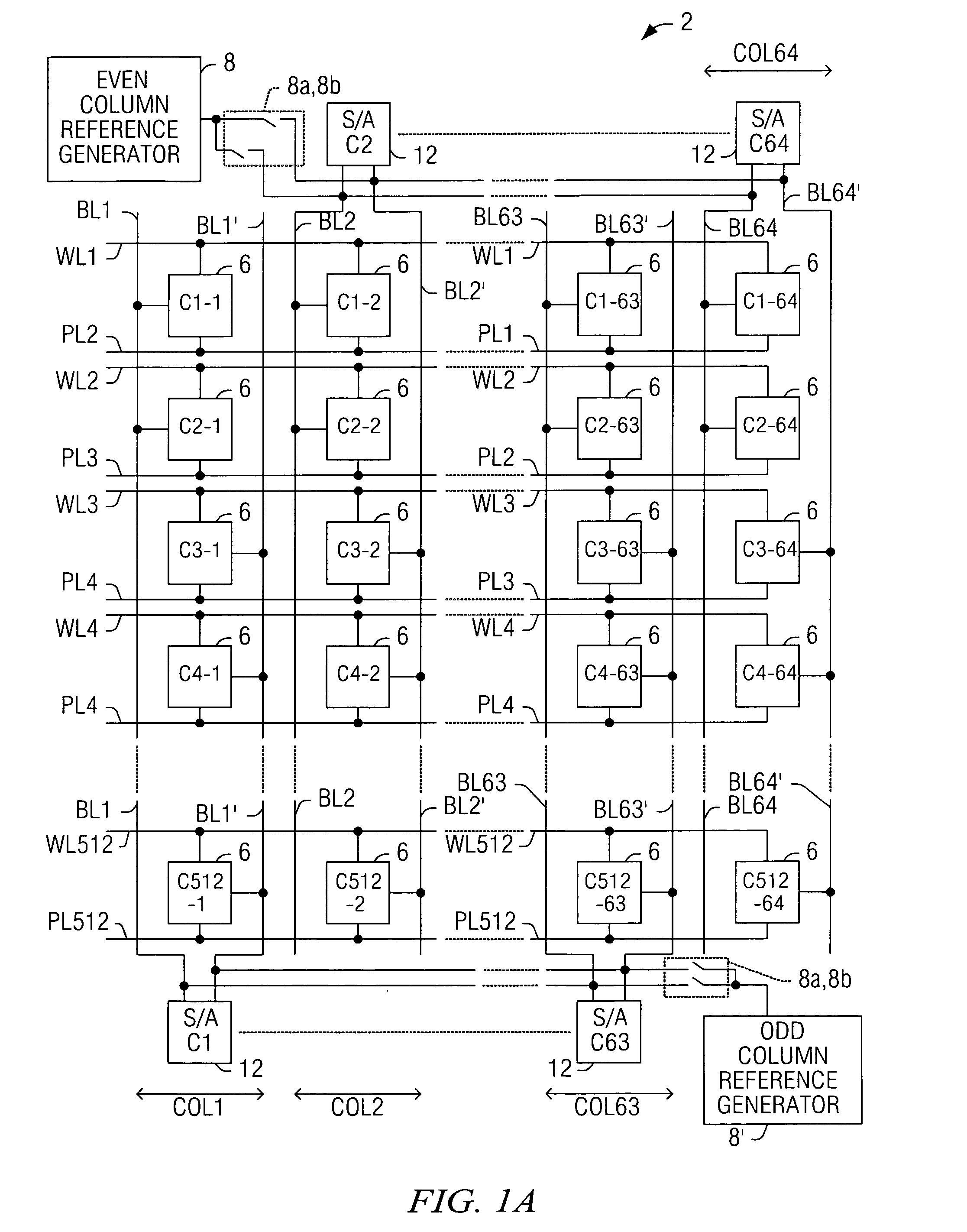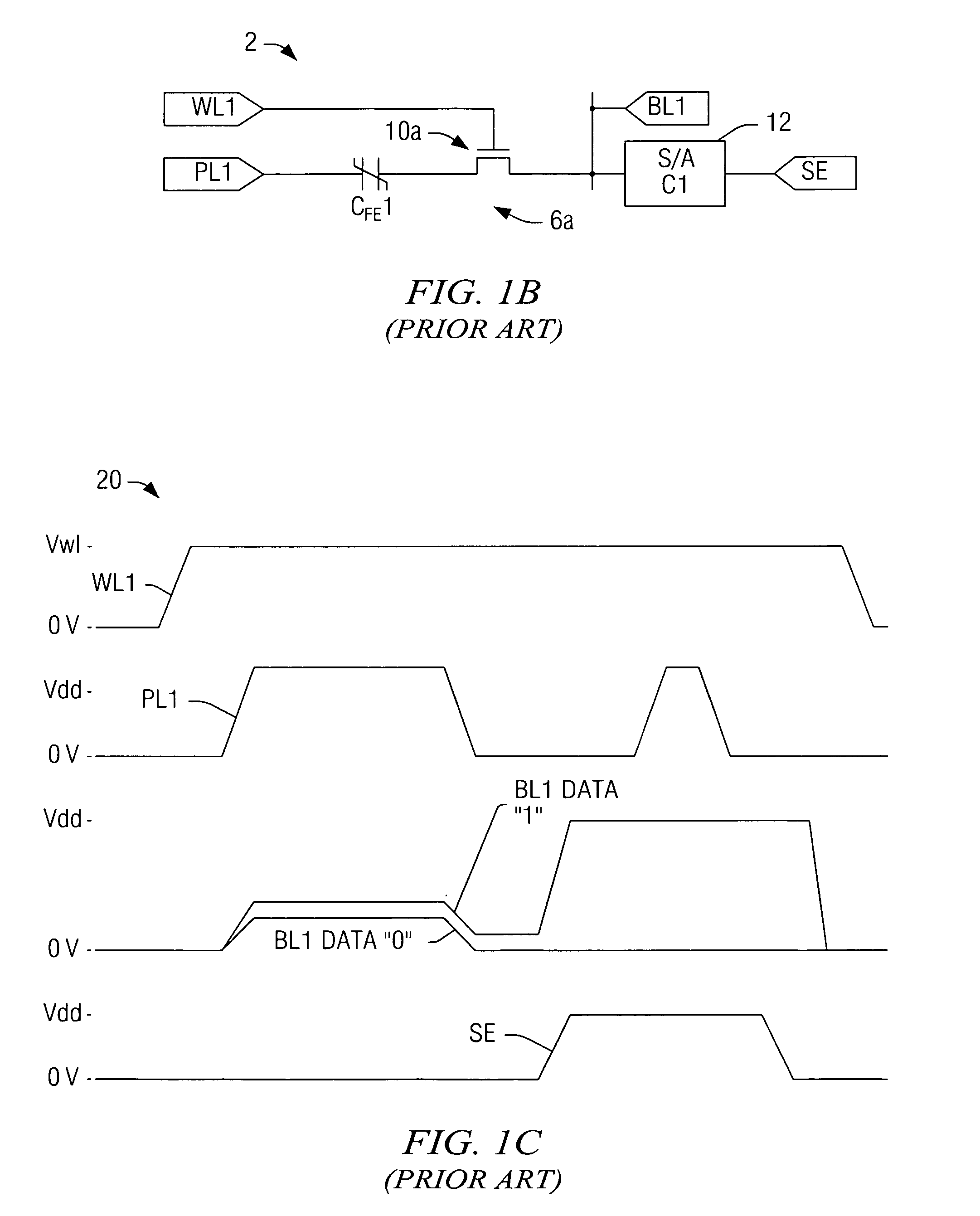Method and apparatus to reduce storage node disturbance in ferroelectric memory
a technology of ferroelectric memory and storage nodes, applied in the field of apparatus and methods for reducing storage nodes in ferroelectric memory devices, can solve the problems of unwanted charging or discharging of storage nodes associated with unselected cells within the plate group, degrading the signal margin required to accurately and repeatably, and reducing peak power, so as to reduce power, reduce peak power, and reduce signal margin deterioration
- Summary
- Abstract
- Description
- Claims
- Application Information
AI Technical Summary
Benefits of technology
Problems solved by technology
Method used
Image
Examples
Embodiment Construction
[0029]One or more implementations of the present invention will now be described with reference to the attached drawings, wherein like reference numerals are used to refer to like elements throughout. The invention relates to ferroelectric memory devices and access methods therefor, in which pulses are selectively applied to wordlines for dissipating storage node disturbance charges while the cell plateline and the associated bitline are held at substantially the same voltage. The invention is hereinafter illustrated and described in the context of folded bitline type ferroelectric memory architectures using single transistor-single capacitor (e.g., 1T1C) cells. However, the invention is not limited to the illustrated implementations, and may alternatively be employed with other cell types (e.g., 2T2C) and / or in other array architectures.
[0030]Referring initially to FIG. 2, an exemplary method 50 is illustrated for accessing memory cells in a ferroelectric memory device having plate...
PUM
 Login to View More
Login to View More Abstract
Description
Claims
Application Information
 Login to View More
Login to View More - R&D
- Intellectual Property
- Life Sciences
- Materials
- Tech Scout
- Unparalleled Data Quality
- Higher Quality Content
- 60% Fewer Hallucinations
Browse by: Latest US Patents, China's latest patents, Technical Efficacy Thesaurus, Application Domain, Technology Topic, Popular Technical Reports.
© 2025 PatSnap. All rights reserved.Legal|Privacy policy|Modern Slavery Act Transparency Statement|Sitemap|About US| Contact US: help@patsnap.com



